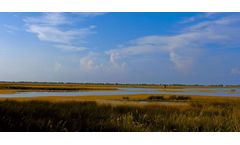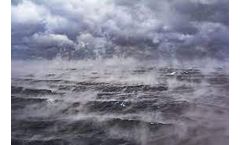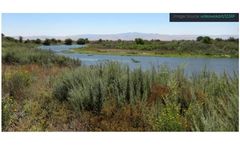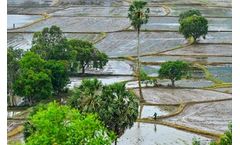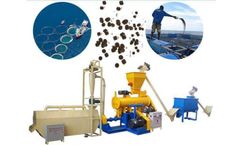Refine by
Desalination Articles & Analysis
16 articles found
Water is present in everything we eat. It often goes unseen, yet it is essential for growing, processing, transporting, and preparing every ingredient that reaches our tables. From a cup of coffee to a fresh salad or a plate of rice, water is at the heart of global gastronomy. Today, in an increasingly interconnected world, this relationship between water and food takes on new dimensions, ...
30 years of data show salinity of groundwater increasing even far from coasts After 30 years of monitoring wells, the latest U.S. Geological Survey (USGS) research shows groundwater across the nation is becoming saltier. It has long been known that seawater can intrude when coastal aquifers become depleted and sea levels rise, but the most recent research throws light on saline intrusion far ...
Begoña Tarrazona, a civil engineer and irrigation specialist at Idrica, explains current water scarcity issues, and what measures can be taken to overcome this situation. ...
ByIdrica
This could be a viable option in place of strategies like cloud seeding and desalination, which have met with only limited success. For instance, while desalination plants have been implemented in some places, they bring their own sustainability issues with them because of the brine and metal-laden wastewater that is produced. ...
Although desalination is commonly believed to be too expensive for agriculture, Spain is disproving the notion. ...
Policy report puts an emphasis on nontraditional sources like desalinated and recycled water Despite their dissimilarities, the people and economies of California’s San Joaquin Valley and the major cities of Southern California are inextricably linked by their reliance on the same water resources, and they share an interest in protecting them to secure a future supply of ...
In remote, rural agricultural areas, newer, Smart Packaged treatment options can deliver clean water without long pipe runs, and desalinating brackish river water with today’s updated containerized reverse osmosis (RO) desalination makes more sense than ever. ...
If such shrimps are purchased, the breeding may be completely failed, and the survival rate is greatly affected. 2. Shrimp seed purchase Desalination: The salinity of the nursery is about 28‰, and the salinity of the shrimp pond on the farm is often lower than the salinity of the nursery. Therefore, the shrimp must be desalinated. The salinity of the ...
As the world searches for ways to ensure adequate supplies of fresh water in the future, it’s becoming clear that environmental projects should join water reuse, desalination, and other technologies as important tools in the quest for water ...
As the world searches for ways to ensure adequate supplies of fresh water in the future, it’s becoming clear that environmental projects should join water reuse, desalination, and other technologies as important tools in the quest for water ...
Desalination driven by solar energy represents an appealing solution for agricultural irrigation in remote areas. In this work, a desalination system based on a photovoltaic-powered nanofiltration (NF-PV) membrane is studied. ...
Salinization of both soils and groundwater systems along the coastal strip of Al-Batinah has placed a substantial burden on farmers regarding crop selection and, therefore, farm profitability. Desalination of brackish and seawaters might be an attractive option to sustain salt-affected lands in the Sultanate, particularly given that recent advances in ...
Keywords: subsurface irrigation, system design, solar desalination, evapo–condensation, performance evaluation, solar energy, solar power, arid climates, condensation irrigation, fresh water, greenhouses, tomato growth, water ...
But because new technology is going to permit moderately salty water to be used, certain types of desalination are going to be useless. One requirement will not go away, however, and that is for removal of bacteria. ...
Over 90% of the water supplied in the coastal region in Israel in 2013 (600 Mm3 y−1) will be from desalination plants. The wastewater generated from this water (>400 Mm3 y−1) is planned, after proper treatment, to be reused for agricultural irrigation, making this low-salinity water the main agricultural-sector future water source. ...
In arid-zone agriculture where available irrigation water is saline, desalination is becoming an attractive method for increasing yields and reducing negative environmental consequences. However, irrigation with desalinated water can be problematic if essential nutrients, including Ca, Mg, and S, removed during reverse osmosis, are not reintroduced. ...


